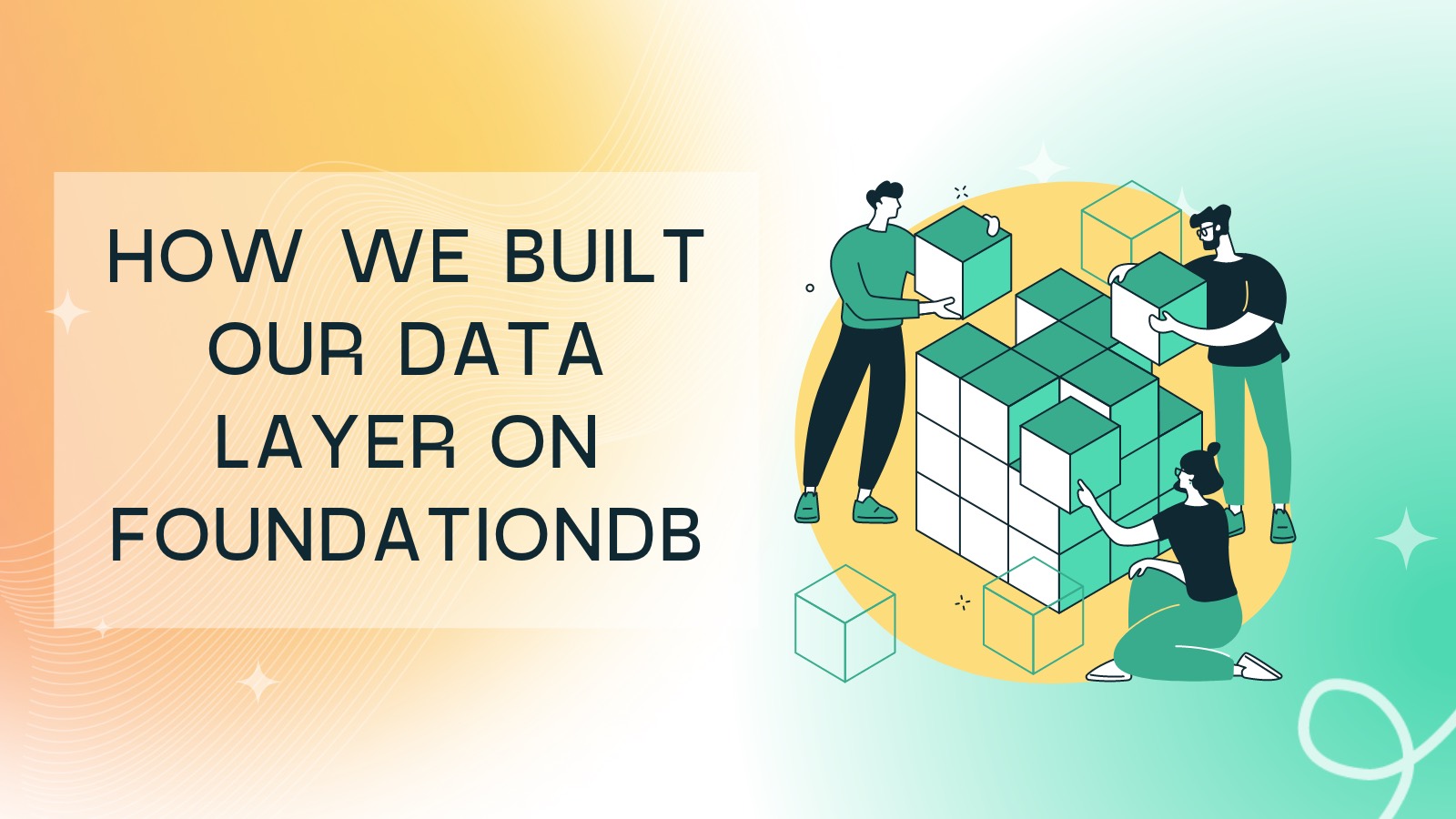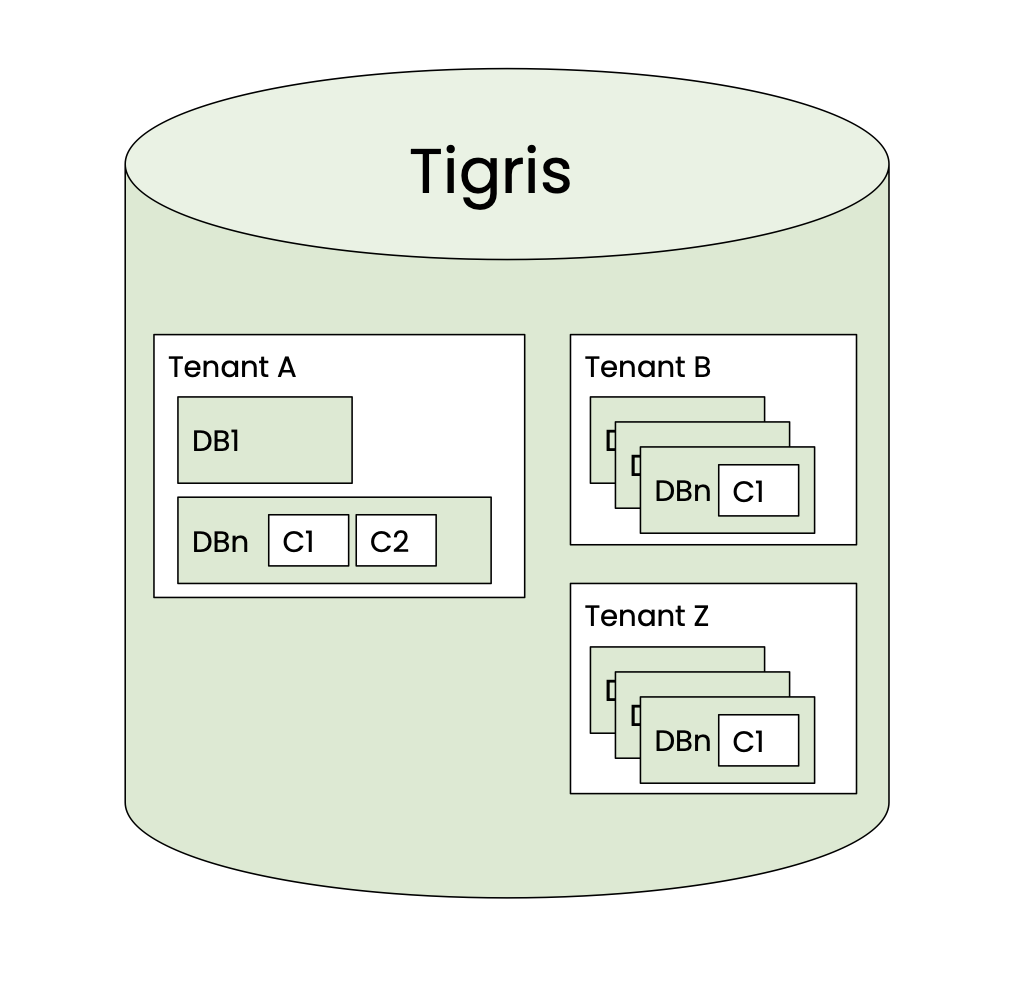Tigris is a globally available, S3 compatible object storage service.
Tigris uses FoundationDB's transactional key-value interface as its underlying storage engine. In our blog post Skipping the boring parts of building a database using FoundationDB we went into the details of why we chose to build on FoundationDB. To recap, FoundationDB is an ordered, transactional, key-value store with native support for multi-key strictly serializable transactions across its entire keyspace. We leverage FoundationDB to handle the hard problems of durability, replication, sharding, transaction isolation, and load balancing so we can focus on higher-level concerns.
We are starting a series of blog posts that go into the details of how Tigris has been implemented. In the first post of the series, we will share the details of how we have built the metadata storage layer on top of FoundationDB. We will cover the topics of data layout, and schema management.

Data layout
As Tigris is a multi-tenant system, when a user is created they are assigned to a tenant. All of their data is then stored under this tenant. Thus, the hierarchy of data storage looks something like this

Data layout
As Tigris leverages FoundationDB as the storage engine, which exposes a key-value interface, the data has to be stored as key-value pairs. This means there needs to be some translation from a logical layout of storing tenants, buckets, objects, and schemas to a physical layout.
Tigris maintains different key layouts depending on the information it stores. Each key layout has a custom encoder-decoder and has a prefix at the start of the key. The encoder adds this prefix; then, the decoder uses it to decode it according to the appropriate structure. The high-level concept of key encoding remains the same for all types of data (users or system data).
Key encoding
Within Tigris, metadata is stored in collections. A collection is identified by a tenant, database, and collection name. This is the minimum information we need in the key to identify a record. However, a collection may have secondary indexes as well. Therefore, an index identifier must also be part of the key.
This key structure is made extensible by having a version component allowing us to add or remove attributes in the future.
To summarize, we need to pack the following information in the key:
tenant | database | collection | index name | index value
Taking a more realistic example, let's say we have a tenant foobar with a database userdb, a collection users, and an id field defined as the primary key of the records. This translates to the following key structure
["fooApp", "userdb", "users", "pkey", [1]] =>
{"id": 1, "email": "alex@example.com", "phone_number": 12345}
The index values are seen as an array here because Tigris supports composite indexes as well, meaning a collection can have one or more than one field defined as index fields. These index values are packed in a single binary structure.
However, storing this information in every key as-is means unnecessary costs attached to each record. Therefore we implemented key compression.
Key compression
The key compression algorithm that we have implemented replaces these long strings with integers and ensures that the integer assignments are unique. This is accomplished by persisting these mapping in an internal metadata collection and assigning to these strings during creation time.
In order to compress a key, the first step is to assign a unique integer to the container (tenant, database, collection) names. This is done during a Data Definition Language (DDL) operation. Whenever Tigris receives a tenant creation, or bucket creation request, it starts a transaction. In this transaction, a unique integer value is reserved for this container name and then assigned to this container. This mapping is stored in an internal collection called encoding. The value assigned is incremented in a fashion that each mapping is unique. This mapping is immutable so that it can be freely cached on Tigris servers. In other words, all the user metadata like a tenant, database, collection, and index names are uniquely identifiable by their corresponding integer representation. As this is done in a transaction, completing the request means a unique assignment of the integer to the string.
Using integers has the following benefits:
- Machine-level instruction can be used to perform integer comparison in one cycle
- Packed as 4bytes; on the other hand, if the string size grows, it will take up a lot of memory. This results in compact keys, therefore, optimizing CPU, memory, and storage usage
- Even nominally saving a few bytes per string representation does add up when there are billions of records
The encoding collection that has this information and has the following layout:
encoding | version | tenant-name => integer identifier
encoding | version | tenant-id | database-name => integer identifier
encoding | version | tenant-id | database-id | collection-name => integer identifier
Where
- encoding → identifier of this metadata collection (key layout)
- version → version of this key structure so that we can evolve this layout
- tenant-name, database-name, collection-name → The user-facing names
These integer values are then used to form the key. Now with this information, here is how the key structure looks like:
["usr",0x01,0x01,0x02,0x03,0x04,[1]] =>
{"id": 1, "email": "alex@example.com", "phone_number": 12345}
Where
- usr → the identifier for this key layout
- 0x01 → version of this key layout
- 0x01 → tenant-id
- 0x02 → database-id
- 0x03 → collection-id
Value encoding
Internally all user values are stored inside a protobuf message. We don't mutate user payload. Introducing this top-level structure allows us to have metadata of the record attached to it along with raw user content. As an example, this protobuf message, apart from user data, has information such as compression, created time, updated time, the schema version, and other housekeeping fields. Some of this information is then indexed so that we can support time series queries like returning records that are created after Jan 1, 2022.
message ValueWrapper {
int32 ver = 1; // schema version
int32 enc = 2; // encoding of the raw data
int32 comp = 3; // compression of the raw data
Timestamp created_at = 4; // created timestamp of the record
Timestamp updated_at = 5; // updated timestamp of the record
bytes raw = 6; // raw user payload
}
Our wrapper adds a slight overhead to every value, but provides us with much flexibility. For example, we can switch between different compression algorithms and value encodings on the fly with no downtime or backfills required. In addition, unused fields don't have to be encoded at all.
This is the first blog post in a multi-part series where we will be sharing the details of how we have implemented some of the core features in Tigris. Be on the lookout for the next part!
